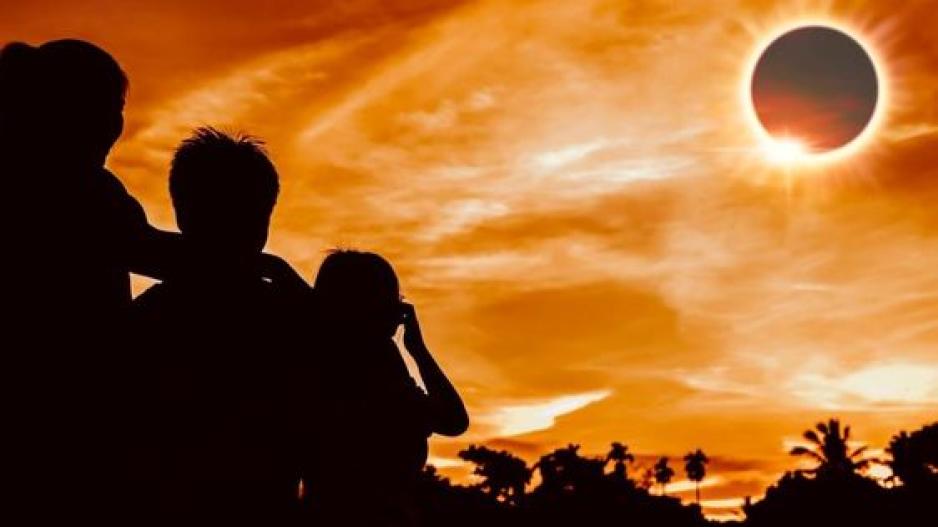Why We Have Total Solar Eclipses: The Cosmic Coincidence
This perfect alignment that makes the Sun and Moon appear almost the same size in the sky
Total solar eclipses are among the most awe-inspiring phenomena in nature. They offer a rare opportunity to witness the Sun, Moon, and Earth align perfectly, casting the Moon’s shadow on our planet and plunging parts of the Earth into temporary darkness. But why do we have total solar eclipses, and what makes them so special?
@cosmic._.curiosities sun and moon, same size??? #SpaceFacts #SolarEclipse #CosmicCoincidence #AstronomyLovers #ScienceExplained #TikTokScience #ViralFacts #CosmicWonder #SpaceMysteries #AstronomyCommunity #MoonAndSun #ExploreSpace #TikTokViral #AstroCuriosity #FYP #FYPシ #sun #moon #space #astronomy #spacexplorer #astronomyfacts #luna #sunandmoon #goldenhour #star ♬ golden hour - main character melodies
The Mechanics of a Total Solar Eclipse
A total solar eclipse occurs when the Moon passes directly between the Earth and the Sun, completely covering the Sun's disk as seen from certain parts of the Earth. This perfect alignment is possible because of a remarkable coincidence: the Sun is about 400 times wider than the Moon, but it is also about 400 times farther away. This means that from our perspective on Earth, the Sun and Moon appear almost the same size in the sky.
However, this alignment isn’t a regular occurrence. The Moon’s orbit around the Earth is tilted by about 5 degrees relative to the Earth’s orbit around the Sun. As a result, the Moon usually passes slightly above or below the Sun, leading to partial eclipses or no eclipse at all. Total solar eclipses only happen when the orbits align perfectly, allowing the Moon to cover the Sun completely.
The Rarity and Significance of Total Solar Eclipses
Total solar eclipses are rare events, with any given location on Earth experiencing one about every 375 years on average. This rarity adds to their mystique and has captivated human imagination for millennia. Throughout history, solar eclipses have been seen as omens or divine interventions, inspiring both awe and fear in ancient cultures.
From a scientific perspective, total solar eclipses have been crucial in advancing our understanding of the Sun and the universe. For example, during the 1919 solar eclipse, astronomers confirmed Einstein’s theory of general relativity by observing the bending of starlight around the Sun’s gravitational field. Eclipses also provide a unique opportunity to study the Sun’s corona—the outermost part of its atmosphere—which is usually obscured by the bright light of the Sun’s surface.
The Future of Total Solar Eclipses
Interestingly, total solar eclipses are not a permanent feature of Earth’s future. The Moon is gradually moving away from Earth at a rate of about 3.8 centimeters per year. Over millions of years, this will cause the apparent size of the Moon to shrink, eventually making it too small to completely cover the Sun. When that happens, only partial or annular eclipses—where a ring of the Sun remains visible around the Moon—will be possible.
This ongoing change reminds us of the delicate balance required for total solar eclipses to occur and how fortunate we are to witness them in our current epoch. These cosmic events are a reminder of the dynamic nature of our solar system and the ever-changing relationship between the Earth, Moon, and Sun.
Total solar eclipses are the result of a cosmic coincidence that has fascinated humans for centuries. They occur because of the precise alignment of the Earth, Moon, and Sun, and have played a significant role in both culture and science. As the Moon slowly drifts away from Earth, these spectacular events will eventually become a thing of the past, making it all the more important to appreciate and study them while we still can. In the meantime, each eclipse offers a unique opportunity to connect with the cosmos and marvel at the intricate dance of celestial bodies that make our solar system so special.






